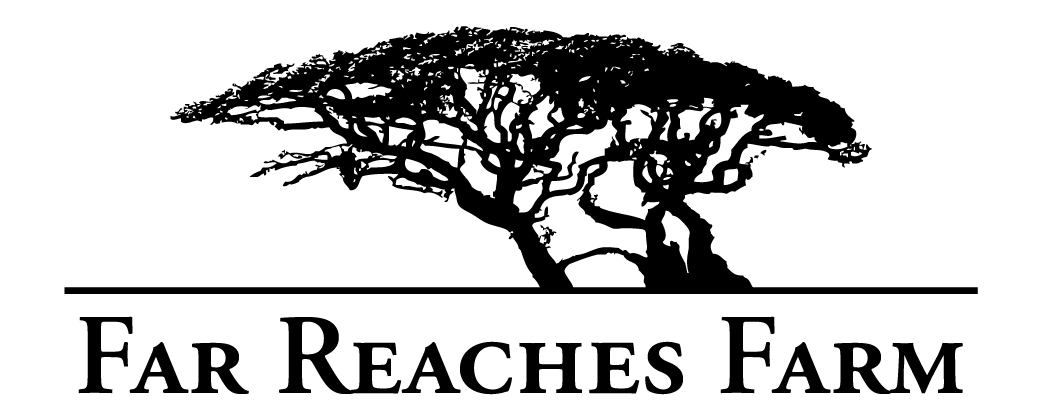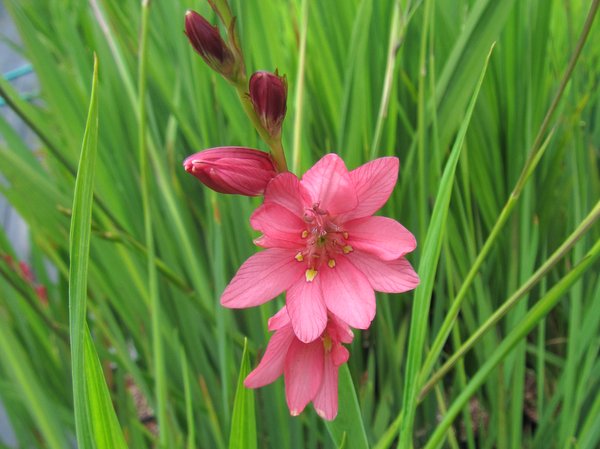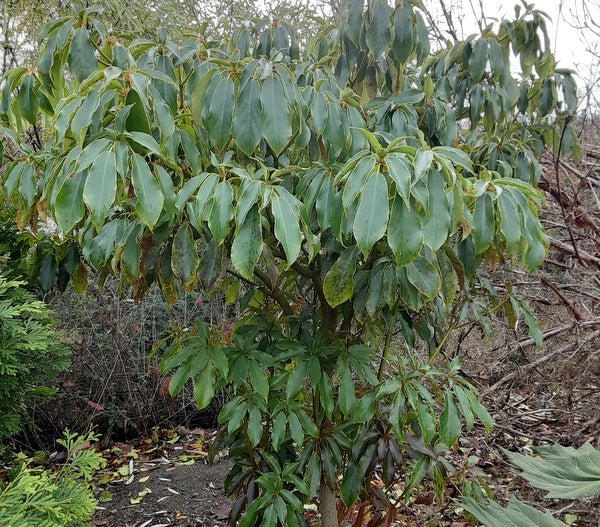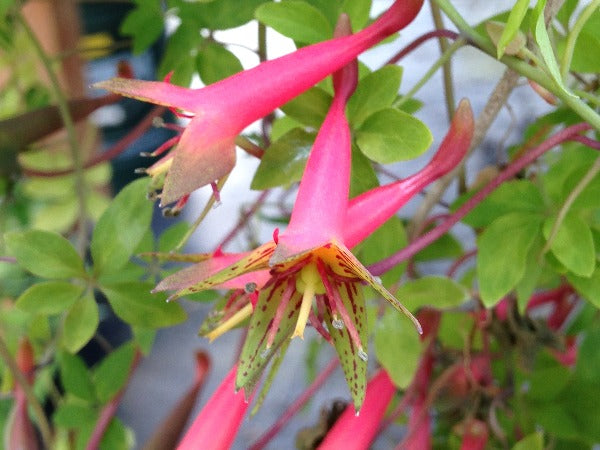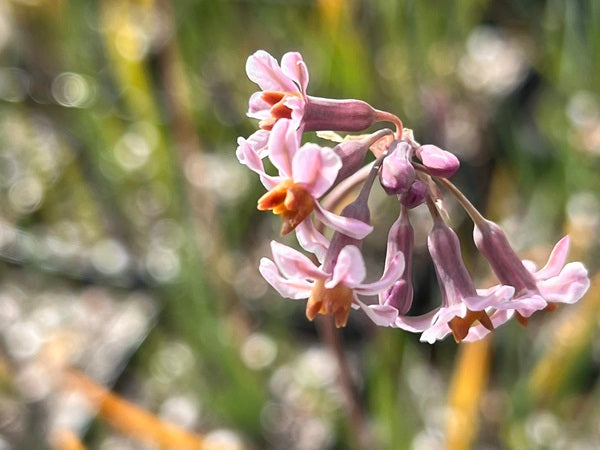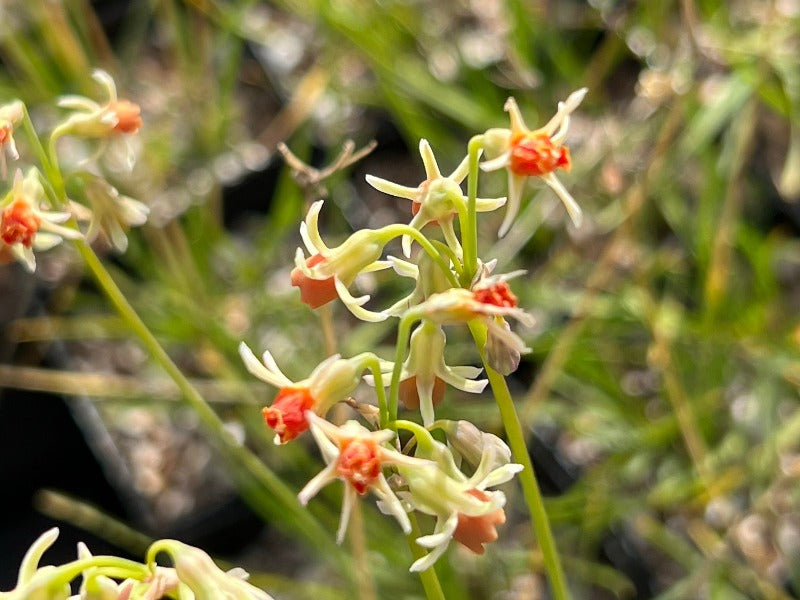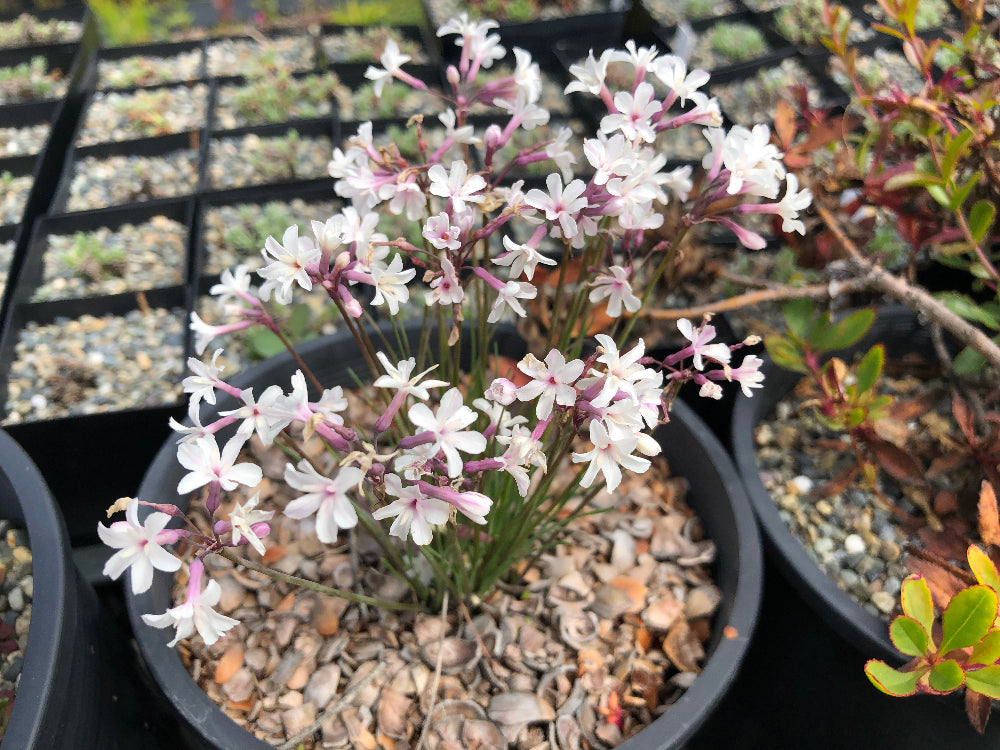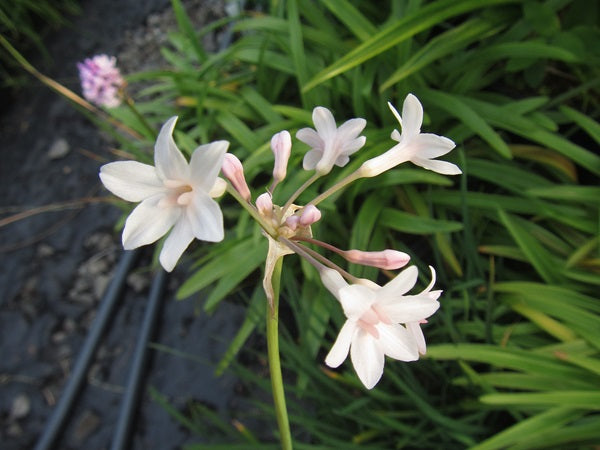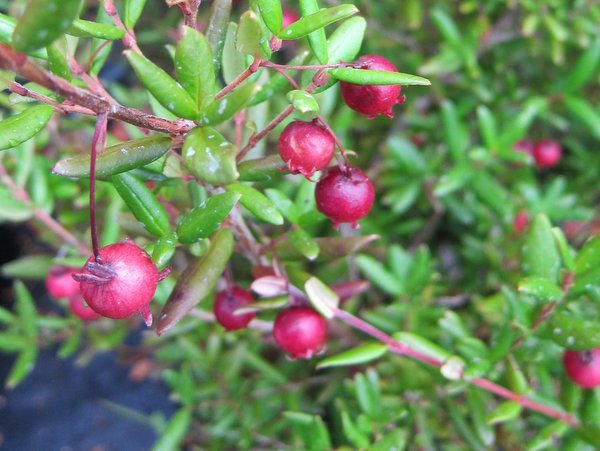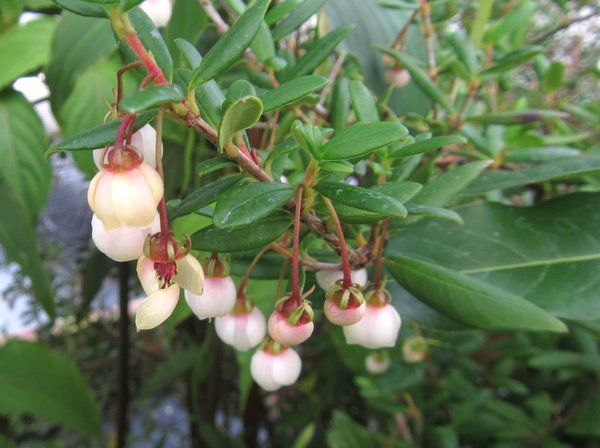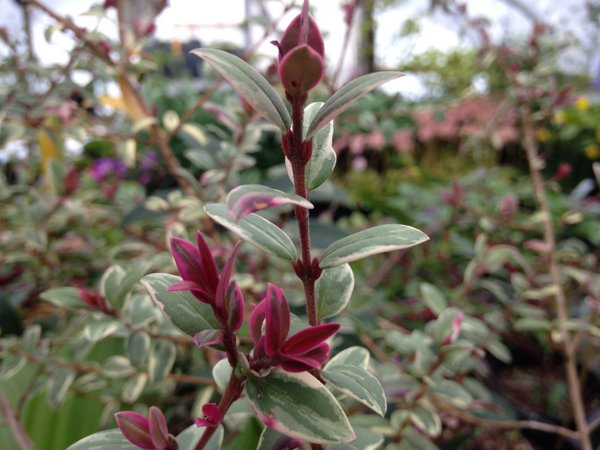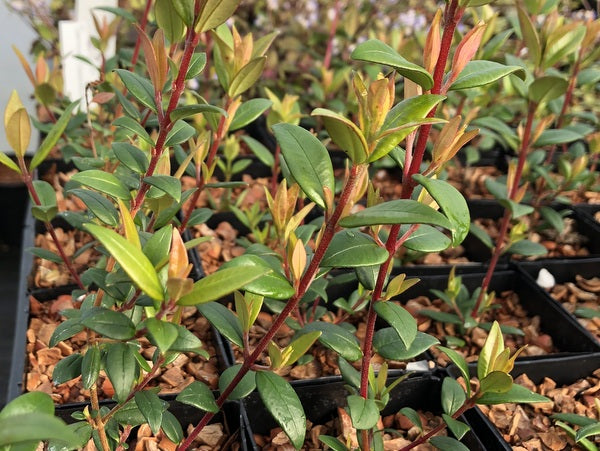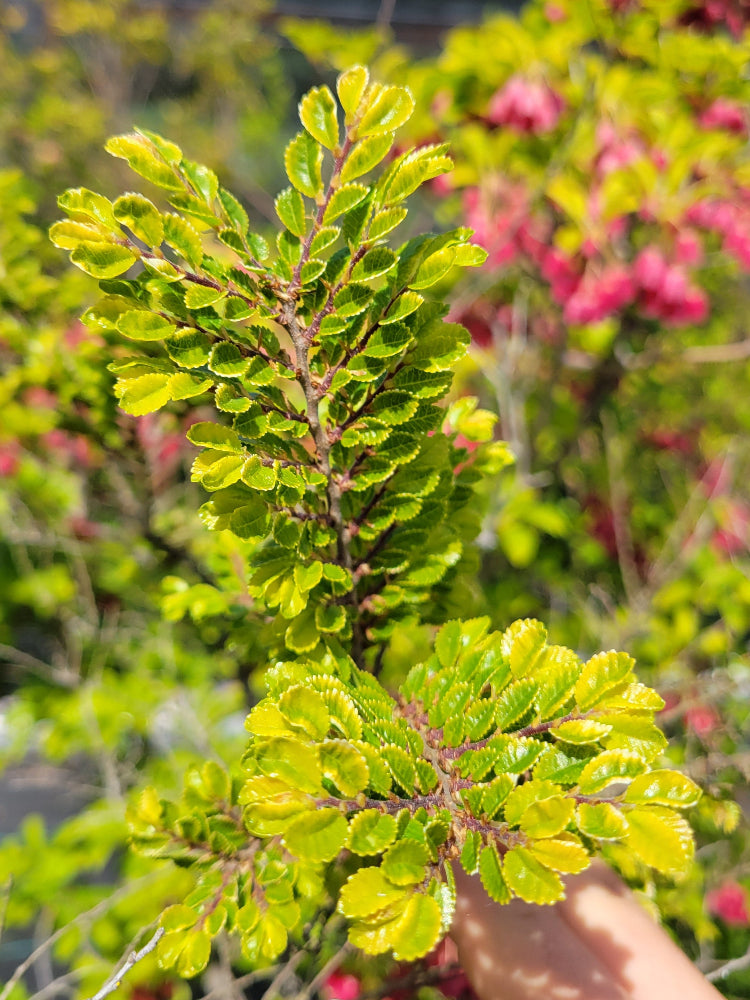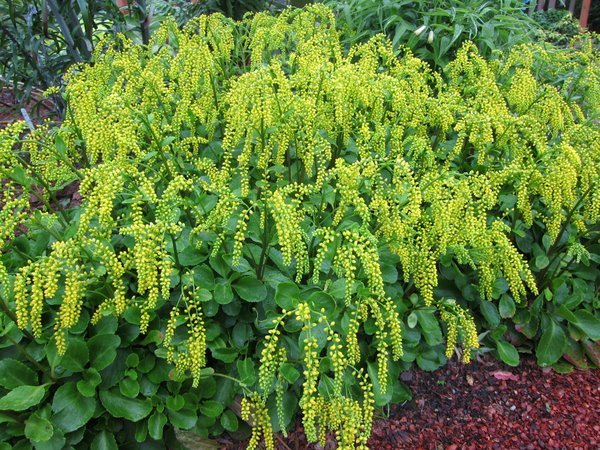Sort by:
1775 products
1775 products
Oh the Ozarks, packed with botanical curiosities and endemic gems like our own little version of a Yunnanese mountain range. From this legendary producer of such smash hits as Hamamelis vernalis comes yet another hit single, the ozark trillium. A botanist's beauty, in other words a green flower, but truly one of the best if you, like us, are into that sort of thing. Classic trillium form with delicately curved acid green petals painted a deep maroon at the base. Like other trilliums hailing from East of the rockies these appreciate a pleasant woodland setting and can put up with alkaline clay soils.
This is a lovely thing we received from Ellen Hornig at the late Seneca Hills Nursery in New York where she was able to grow this thanks to deep lake-effect snow cover. Looking perfectly intermediate between Dierama and Crocosmia, this is the perfect choice if you are wanting a soft pink Crocosmia but can't find one.
One of the classic broad leaf evergreen small trees, this grows quite slowly and will fill the evergreen shrub niche for many years. This has small apetalous (that would be no petals so you can guess at the wow factor) chartreuse flowers in spring. Just a great Asian plant requiring decent moist soil.
Wheel Tree. Our collection from Taiwan of this indispensable broadleaf evergreen that usually is a small tree in gardens. Very clean and attractive, always the first criteria to be considered whether shopping for plants or romance, the Taiwan forms are regarded as better garden plants with better foliage. Surprisingly nice green flowers which lack petals or sepals but have dozens of stamens densely arranged in a wheel pattern. In the family Trochodendraceae, which it shares only with Tetracentron sinense (which we have also collected), this is also found in China and Korea. We have ours in full sun where it has handled with aplomb, drops to 10F in winter.
Kelly acquired this tuberous species in the late 1980's, an almost inconceivably distant time when correspondence was cursive and timepieces had hands. A request for seeds of this species was sent after receiving the Index Seminum (seed list) from the legendary English plantsman, Harry Hay, with the memorable address of Margery Hall Pig Farm. The resultant plants have survived nobly over the intervening 30-odd years which was no small achievement given that some of those years were odd indeed. From round tubers arise thin vines wanting to climb with green leaves comprised as expected of 5 leaflets narrow pink flowers whose yellowish inner face is stippled in red. An bonus are the deep blue pearls of seeds. Good drainage, especially in winter and quite easy in pot culture, overwintered inside.
This tuberous Nasturtium species from Chile is quite remarkable and has become a focal feature in our front rock garden until it goes dormant for the year in late July. The blue digitate foliage with up to 7 small leaflets arranged circularly drape and spill until obscured by yellow flowers in June-July. This is adapted to unstable rock slopes deep roots form new tubers. Plant the dormant bulb in well-drained soil deeper than you think, no, deeper than that, still deeper - there you go! A foot or foot and a half gets it done. Propagation is by seed or by tubers with large ones getting cut up like you are planting potatoes.
This chance hybrid society garlic creates it's own perfect color pairing, no paint swatches necessary. The bright yellow central corolla of the flower plays ever so nicely with the classic pinkish purple outer tepals reminiscent of T. violacea. While we can't confirm its ability to grow in interplanetary conditions, or it's popularity with Carl Sagan its bright pop of color contrast, and impressive hardiness to about 23°F are worthy of at least one orbit of the mind.
An unusual color form of a hardy, perennial, evergreen, deer-resistant South African bulb? No florid adjectives needed, just the bare bones make this appetizing enough (not to mention that garlicky odor). Soft pinkish-brown strap-like petals surrounding a burnt orange center make for a subtle and yet distinct flower. This is one society garlic whose parlor I would definitely drink an aristocratic cuppa in.
A lesser known cousin to society garlic that may not wow you from afar but get to know it and you may be surprised. This perennial South African bulb sports narrow blade like foliage and interesting flowers almost like a miniature daffodil with small strap-like green outer petals surrounding a pumpkin orange central corolla with a texture not unlike a rubber eraser. Sweetly fragrant in the evenings, drought tolerant, and deer resistant, what's not to like?
An ornamental Society Garlic that made its way here to the Far Reaches from England lo those many years ago. Rather than continue to admire what had developed into a most attractive clump, we succumbed to the baser instincts of the merchant and divided away! Fine grassy chive-ish leaves with stems bearing charming white/pink flowers, and while you might think this an onion or garlic relative, it is actually in the Amaryllis family. Flowers and leaves are edible, should be deer/rabbit resistant and tolerant of some dry if need be but better with moderate water levels.
Perhaps polite society really is dead, or at least polite society garlic. This poor little fella is quite possibly extinct in the wild, or at the very least critically endangered and restricted to a tiny area of the Eastern Cape in South Africa. If that's not enough to elicit your sympathy then the sweetly fragrant soft pink flowers are sure to win over your heart, and make you forget for a blissful moment the comparatively uncouth smell of the foliage (though that provides it with deer resistance. Drought tolerant and desirous of fair drainage but otherwise easy going for a South African bulb.
Unlike the common folk of Tulbaghias this "society garlic" got the white-tie message and is rather the more fetching for it. Blushing pink buds opening to pure white or pale-pink flowers making for a picturesque plant I'd be happy to ask for a dance at the next gala, if only it wasn't for that impolite garlicky smell....well beggars for hardy South African bulbs can't be choosers I guess.
Chilean Guava. Our mama plant is loaded with fruit in the greenhouse right now and after eating some, we're questioning why we are selling any instead of keeping them to lavish ourselves in personal extravagance. If we were just two miles down the road by the shore we would grow these outside but here in the relative Siberia of the Quimper Peninsula Steppe, we dasn't take the chance. One of the perfect evergreen shrubs for mild climates, this has shiny aromatic leaves giving olfactory testimony to its inclusion in the Myrtle family. Nice white flowers followed by ruby flavorful fruit the size of average Blueberries and all on a broadly columnar plant to 8' tall. If this was hardier, it would be ubiquitous. As it is, it is worth coddling in cooler climes and personally we are going to throw down some Chilean Guava on our foodie friends come Christmas. The best thing about bringing an Ugni dish to Christmas dinner? It'll be the best Ugni anyone has ever had. Neo in The Matrix, not in black but in Chef white, holding a plate of Ugni a la Far Reaches in one hand and reaching out, beckoning "Bring it, foodies" with the other. Oh yeah, so doing the Ugni.
We are so close to being able to grow this outside that we literally can see the 2 miles to downtown PT where this would thrive but no, we're the nursery on the hill in the cold pocket. Yes, a little touchy about it. Flashy variegated leaves in pinks-creams-yellows-whites and greens go with the pink flowers and tasty fruit on this Chilean Guava. Gorgeous evergreen for gardens above 15F which are annoyingly prevalent in our area.
This is a hardier and somewhat smaller-leaved form of the Chilean Guava that was recently introduced by Paul Barney from Pucon, Chile and which Far Reaches Botanical Conservancy brought into the US from the UK. An excellent evergreen ornamental small shrub to 5' or 6' with scented white flowers and deep burnished red fruit in the fall which were said to be Queen Victoria's favorite fruit. We expect this to handle at least a half zone colder.
The Japanese name 'Seiju' translates to "master" in English. This showy dwarf Chinese Elm has mastered textural structure with especially corky bark as it ages. The small leaves don't obscure this corkiness and have a brief Autumnal dalliance with yellow. A go-to specimen for Bonsai and provides a larger element in the rock garden.
Excellent member of the Crassulaceae which means it is a succulent basically, but one that eschews the arid sunny spot in favor of lusher environs like our shade garden with dairy manure mulch. Makes a thick clump of fleshy green leaves with taller stems of pendulous strings of bead-like yellow flowers that are nothing less than captivating. This is one of those plants we have had for a long time but one that surprises us each year when it blooms because we don't expect something so familiar to float our boat quite so high. Very easy to please and a plant people want when they see it in flower.
Merry Bells. One of our favorite of the Midwest and Eastern woodland wildflowers. Rich gold pendant flowers dangling like earrings on a woman of some serious substance. Combines beautifully with upper crust plants such as Cardiocrinums and Arisaemas yet hangs comfortably with box store Hostas. These are divisions from our stock plants.
